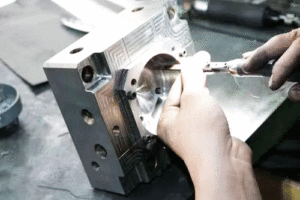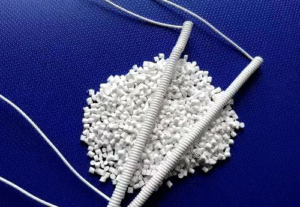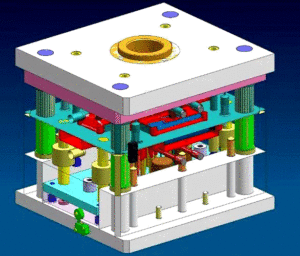
Polishing Treatment for Plastic Molds
Polishing Treatment for Plastic Molds With the widespread application of plastic products, such as daily-use items and beverage packaging containers, there is often a requirement
Underfilling is the phenomenon that the injection material does not completely fill the mold cavity and causes the part to be incomplete. It usually occurs in the thin-walled area or the area away from the gate. There is no need to adjust some underfillings that are not important internally and do not affect the appearance. If you want to adjust, it may cause the burrs.
There are many reasons for the underfilling, mainly as follows:
Adjust appropriately until the parts are completely filled.
When the temperature of the material is low, the viscosity of the melt is greater, and the resistance during mold filling is also large. Appropriately increasing the temperature of the material can enhance the fluidity of the melt.
During the filling process of the molten material in the cavity, the driving force is insufficient to continue to flow remotely. Increase the injection pressure, so that the molten material in the cavity always obtains sufficient pressure and material volume before condensing and hardening.
It takes a certain amount of time to inject a part of a certain weight. If the time is insufficient, the injection volume will be insufficient. Increase the injection time until the part is completely filled.
The main reason is premature pressure transfer. That is, the adjustment of the holding pressure switching point is too large, and the remaining large amount of material is supplemented by the holding pressure. That will inevitably make the part weight insufficient and underfill. Then, the holding pressure switching position should be readjusted to the best point, to make the parts complete.
When the shape and thickness of the part change greatly, too low mold temperature will consume too much injection pressure. Then, appropriately increase the mold temperature or reset the mold water channel.
The nozzle overflows during injection, and part of the material is lost. Re-adjust the mold to make it fit well with the nozzle.
When selecting a seat-retracting production, the injection nozzle and the mold will collide with each other for a long time. And it will easily make the injection hole smaller. That is, the material flow channel will become smaller, while the area specific volume of the strip will increase. They will cause the cold material to block the nozzle hole. Or consume too much injection pressure. The nozzle should be removed for repair or cleaning. And the forward end position of the nozzle should be appropriately reset to reduce the impact force to a reasonable value.

The anti-reverse ring on the screw head and the thrust ring have a large abrasion gap, which cannot be effectively cut off during injection. Then, it causes the molten material that has been measured at the front end to produce reverse flow, with injection component losing. And finally leads to incomplete parts.
The method of verified the worn rubber ring:
After the last cycle of injection is completed, it will be converted to manual operation mode. And the injection pressure and speed will be adjusted to a lower value, and then the storage will be completed. At this time, observe the degree of resistance to the advancement of the screw position indicator when the manual injection is performed. That is, the degree of leakage of the rubber ring has been checked. The less obstructed, the greater the degree of leakage.
The rubber ring with a large degree of wear should be replaced as soon as possible. Otherwise the product quality will not be guaranteed if the production is barely carried out.
During the injection process, the air in the mold cavity is too late to be discharged from the parting surface or thimble gap. So the last molten material that enters the mold cavity is blocked by the continuously compressed high air pressure, leaving a defect at the end of the stream that is obstructed and cannot be fused.
Set up a moderate exhaust channel at the parting surface corresponding to the air-blocking position. If the air blocking position is not on the parting surface, you can use the original sleeve or thimble to change the internal exhaust. Or re-select the gate position, so that the air is discharged according to the expected position.
These are dead corners where air is easy to store, and they are also difficult to fill. The ribs should be thickened or the root arc angle should be increased. The most thorough method is to add exhaust measures.
Due to the continuous improvement of mold manufacturing technology and design level, most of the runner designs for single-head molds are reasonable and meet the molding requirements. The above runner is the distribution of multi-cavity runners. There are often slight differences in the gates, which will lead to uneven flow components injected into the cavities. So that some cavities are filled, and some cavities are still underfilled.

Polishing Treatment for Plastic Molds With the widespread application of plastic products, such as daily-use items and beverage packaging containers, there is often a requirement

Injection Molding Techniques for TPE and TPR Injection Molding Techniques for TPE and TPR 1. Dry the TPE and TPR material before injection molding It

Winter Maintenance Measures for Injection Molding Machines As winter approaches and temperatures gradually drop, a cold chill envelops the earth. While ensuring personal warmth, it

Assessment Regulations for Mold Trial Exceeding 3 Times Assessment Regulations for Mold Trial 1. Purpose The purpose of this regulation is to standardize the work of